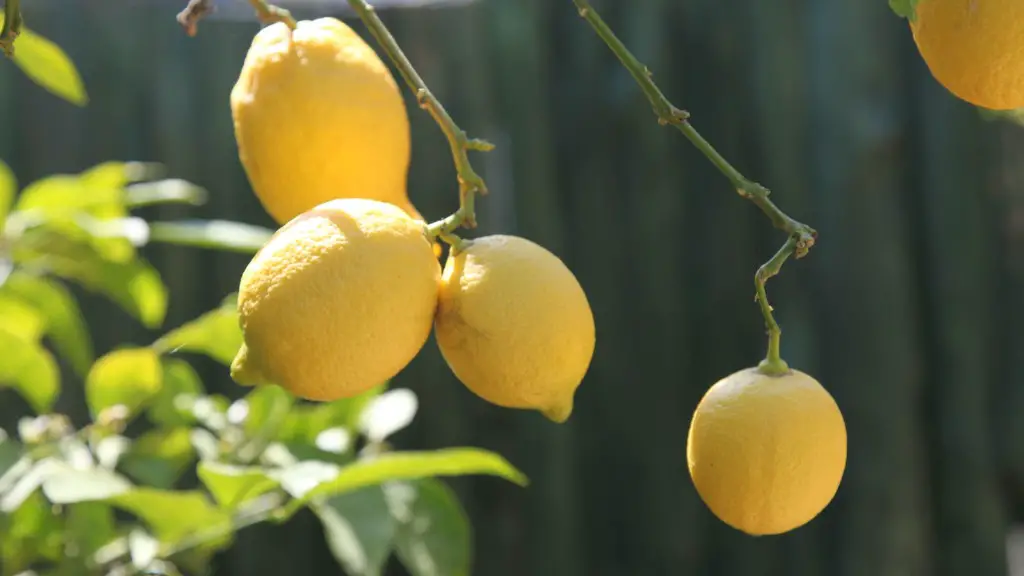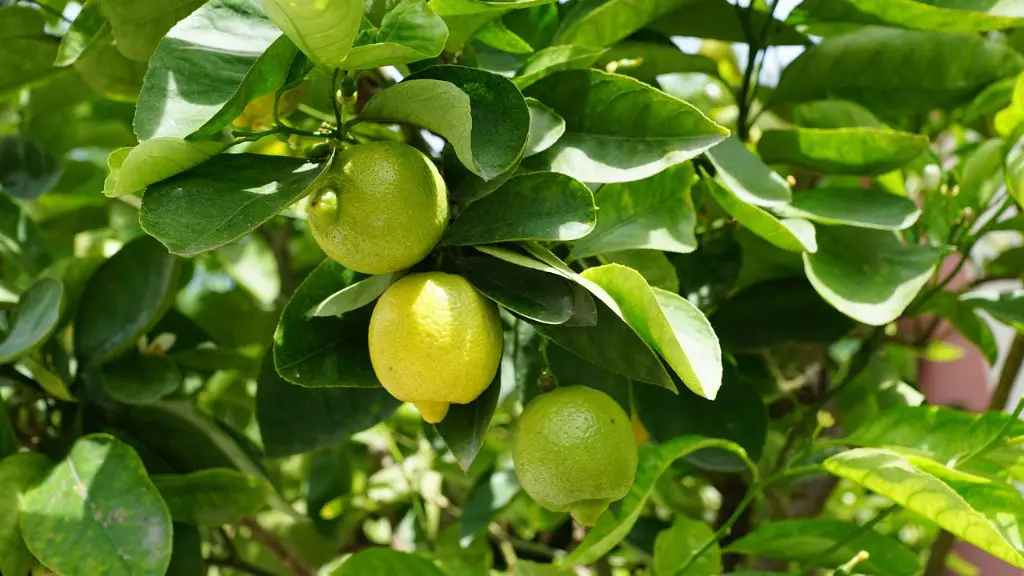When it comes to pruning lemon trees, timing is of the utmost importance. Proper pruning needs to be done when the tree is dormant and before the buds begin to swell. Pruning at the wrong time can be detrimental to a lemon tree, as the timing of pruning affects the overall health and productivity of the tree. To ensure a healthy, productive lemon tree, the best time to prune is late winter or early spring, before the tree begins to bud.
The primary purpose of pruning a lemon tree is to improve its overall shape and structure. Pruning helps to create a more robust and symmetrical tree, as well as removing diseased or dead branches. This ensures a healthier and more productive tree in the future. There are two different techniques of pruning that can be used on a lemon tree – thinning and heading back.
Thinning is used to remove small branches down to the trunk and is beneficial to promote good air circulation throughout the tree. This helps to reduce the presence of any diseases, pests, and promote healthy new growth. Heading back is used to prune back the branches, creating a more compact and tidy shape. Heading back is particularly effective for older trees that need rejuvenating.
When pruning a lemon tree, it is important to first remove any dead or diseased branches, as well as any that are growing in an undesirable direction or crossing over and rubbing together. It is also important to use sterile and sharp pruning shears, as this ensures that there is less likelihood of introducing diseases or pests when pruning. When removing branches, it’s important to make smooth, clean cuts that don’t leave jagged edges, as these can be more likely to attract insects, bacteria and disease.
Once the undesirable branches have been removed, the next step is to begin thinning and heading back the branches as necessary. When heading back, it’s important to remember not to remove more than one-third of the total branches, as this can cause stress to the tree. The same goes for thinning, as removing too many branches can cause the tree to decline in health and productivity.
Overall, pruning a lemon tree is a simple process when done correctly and at the right time. Pruning is an important part of the tree’s care and should be done regularly to maintain a healthy and productive tree in the future. Pruning helps to improve the overall shape of the tree and its air circulation, as well as removing dead branches and encouraging new healthy growth.
Pruning Tools
When pruning a lemon tree, it is important to use the right tools for the job. Pruning shears are the most commonly used tool for pruning citrus trees, as they are specifically designed for cutting through thicker branches. Pruning shears should be kept sharp and sterile to prevent introducing any diseases or pests to the tree. It is also important to use good quality secateurs, as these are better suited to pruning smaller branches and leaves.
To protect oneself while pruning, it is important to wear protective gloves and clothing to prevent any skin irritation or cuts. When pruning higher branches, it is important to ensure stable footing and consider the use of a ladder or pruning pole when necessary.
In addition to protective equipment, it is important to be aware of any pests or diseases in the area before pruning, as some pests and diseases can be spread via pruning. If any pests or diseases are found, it is best to address these issues first before pruning. This will help to prevent introducing further pests and diseases while pruning.
Finally, when pruning any citrus tree, it is important to clean the tools properly and store them away properly when finished. This helps to prevent the tools from becoming rusty or damaged, and also helps to prevent any bacteria or pests from spreading between trees.
Timing of Pruning
In addition to using the right tools, it is also important to prune a lemon tree at the right time. As mentioned previously, the best time to prune a lemon tree is during late winter or early spring, before the tree has started to bud. Pruning at the wrong time can be detrimental to the overall health and productivity of the tree.
It is also important to prune the tree regularly, as this encourages a healthy and productive tree in the future. Pruning should be done every two or three years for younger trees, and every year for older trees. This helps to keep the tree healthy and encourage new growth.
Finally, when a tree is in bloom, it is best to avoid pruning as the flowers will create excess sap, making it difficult to prune. Pruning during this time can also reduce the number of flowers produced. As such, it is best to prune a lemon tree when it is dormant, prior to the start of flowering.
Tips For Pruning Lemon Trees
When pruning any citrus tree, it is important to plan ahead and be aware of the intended shape and structure of the tree. Pruning should be done with a goal in mind, so that the desired shape can be achieved. It’s also important to remember that the removal of too many branches can be detrimental to the health and productivity of the tree.
Pruning a lemon tree should be done in two stages. First, any dead or diseased branches should be removed. Then, the branches should be thinned or headed back as necessary. It’s important to ensure that the cuts are smooth and clean, and no more than one-third of the branches should be removed.
To protect oneself and the tree, it is important to wear protective clothing and gloves while pruning. It is also important to use sharp and sterile pruning shears, as this helps to reduce the spread of any diseases or pests. When finished, the tools should be cleaned and stored away properly to avoid damage and the spread of bacteria.
Aftercare of Pruned Lemon Trees
Once a lemon tree has been pruned, it is important to provide the tree with adequate aftercare. The pruned tree should be checked regularly to ensure that there are no signs of pests or diseases, as these can spread quickly. If any pests or diseases are found, it is important to address these immediately.
Pruned trees should also be provided with ample watering and fertilization to help the tree heal and recover. It is also important to check for signs of sunburn or dehydration, as these can be detrimental to the tree’s health. Furthermore, it is important to check the tree regularly for any signs of new growth or budding, as this indicates that the tree is healthy and recovering.
Finally, it is important to prune any suckers or water sprouts immediately, as these can weaken the overall tree structure and reduce the productivity of the tree. Pruning suckers and sprouts will also help to maintain the desired shape of the tree and prevent any undesirable growth.
Conclusion
In conclusion, pruning a lemon tree is an important part of its care and should be done annually to keep the tree healthy and productive. When pruning, it is important to use the correct tools and take protective measures to protect oneself and the tree. Furthermore, it is important to prune at the right time, when the tree is dormant and prior to the start of flowering. Finally, after pruning, it is important to provide the tree with adequate aftercare, such as watering and fertilization, to ensure the tree recovers and thrives.





